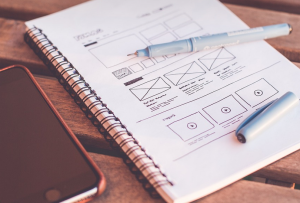
What are Senior Design Engineering Projects?
Senior design engineering projects are a rite of passage for students in many technical fields, like mechanical engineering, electrical engineering, or computer science. Think of them as your own mini-startup, where you get to tackle real-world problems and turn your academic knowledge into tangible solutions.
Instead of just studying theory in class, senior design projects allow you to apply your theoretical understanding in a practical setting. You’ll learn how to work with real-life materials, troubleshoot challenges, and potentially even see your project make an impact on the community.
The Journey Begins: Project Selection
Picking the right project is crucial for success. It’s like choosing a recipe for a cake – the ingredients need to be just right for you to create something delicious!
Here are some key considerations:
- **Your Interests:** What excites you in the world of engineering? Sustainable energy, robotics, or healthcare – choose a project that ignites your curiosity.
- **Company/Organization Partnerships:** Many schools have partnerships with local companies. These projects offer real-world experience and allow you to learn from industry professionals.
- **The Project’s Impact:** Is the goal to solve a specific problem within a community, create something innovative or improve efficiency in an existing system? The impact of your project should be meaningful to you.
A Symphony of Skills: Navigating the Engineering Process
Senior design projects are like navigating a musical instrument – they require precision and teamwork. You’ll need to combine various skills to build a successful project:
- **Problem-Solving:** You’ll face challenges and find creative solutions to address them, honing your critical thinking abilities.
- **Technical Expertise:** Your understanding of engineering principles will be put to the test. You’ll need to apply your knowledge of mechanics, electrical circuits, or software development to build a functional prototype.
- **Project Management:** You’re not just building something; you need to manage time efficiently, delegate tasks effectively, and stay organized throughout the journey.
- **Communication Skills:** You’ll be working in teams and presenting your progress updates. The ability to communicate clearly will help ensure everyone is on the same page.
Embracing Challenges: A Learning Journey
Senior design projects are about learning, not just about winning. They come with their own set of challenges, and these challenges are what truly make them so valuable:
- **Time Constraints:** You’ll need to manage your time wisely while working on various aspects of the project.
- **Budget Restrictions:** You might have a limited budget for materials and equipment, forcing you to explore different solutions.
- **Unexpected Delays:** There’s no guarantee that everything will go perfectly smooth; unexpected delays or unforeseen circumstances may arise, requiring you to adapt and learn about problem-solving in real time.
Collaboration is Key: Teamwork Makes the Dream Work
Most senior design projects involve teamwork. Here’s why it’s so important:
- **Diversity of Perspectives:** Working with people from different backgrounds brings a wider variety of ideas and approaches to the table, leading to more creative solutions.
- **Division of Labor:** Each team member will bring their unique skills to the project. This allows you to focus on your area of expertise and leverage the strengths of others.
Documentation: Your Project’s Blueprint
Like any good invention, your project needs a blueprint before it can be built!
Documenting your work is crucial for success. Not only does this help you stay organized, but it’s also essential for evaluating the progress of your project and presenting your findings to others.
Here are some examples:
- **Design Drawings:** Include detailed sketches or 3D models to illustrate your project’s structure and functionality.
- **Technical Reports:** Create a comprehensive report outlining the design process, technical specifications, testing procedures, and any relevant analysis.
- **Presentation Slides:** Prepare visually appealing slides to present your project to stakeholders including peers and potential mentors.
Project Presentations: Your Time to Shine!
This is it! You’ve poured countless hours into your project, and now you’re ready to showcase your hard work to the world.
Senior design presentations are about more than just displaying your final product; they’re a chance to:
- **Communicate Your Passion:** Share your excitement about the project and explain why it matters.
- **Engage with Your Audience:** Answer questions, address concerns, and spark further discussion on your project’s potential.
Success Beyond Graduation: A Foundation for Future Innovation
Senior design projects aren’t just a stepping stone towards graduation; they’re a launchpad for a future filled with innovation.
Here’s why:
- **Real-World Skills:** You gain hands-on experience that will be invaluable in your job search and career journey.
- **Portfolio Building:** A well-documented senior design project can become a valuable asset for future applications.
- **Networking Opportunities:** You’ll meet industry professionals and fellow students, expanding your network of contacts and potential collaborators.
The Takeaway: Your Senior Design Journey Awaits!
So there you have it – a glimpse into the exciting world of senior design engineering projects. You can make real-world impact, learn valuable skills, and build a foundation for success in your chosen field!
Don’t be afraid to jump in; embrace the challenge, leverage teamwork and collaboration, document everything meticulously, and celebrate your accomplishment. Your journey into the exciting world of senior design awaits!



